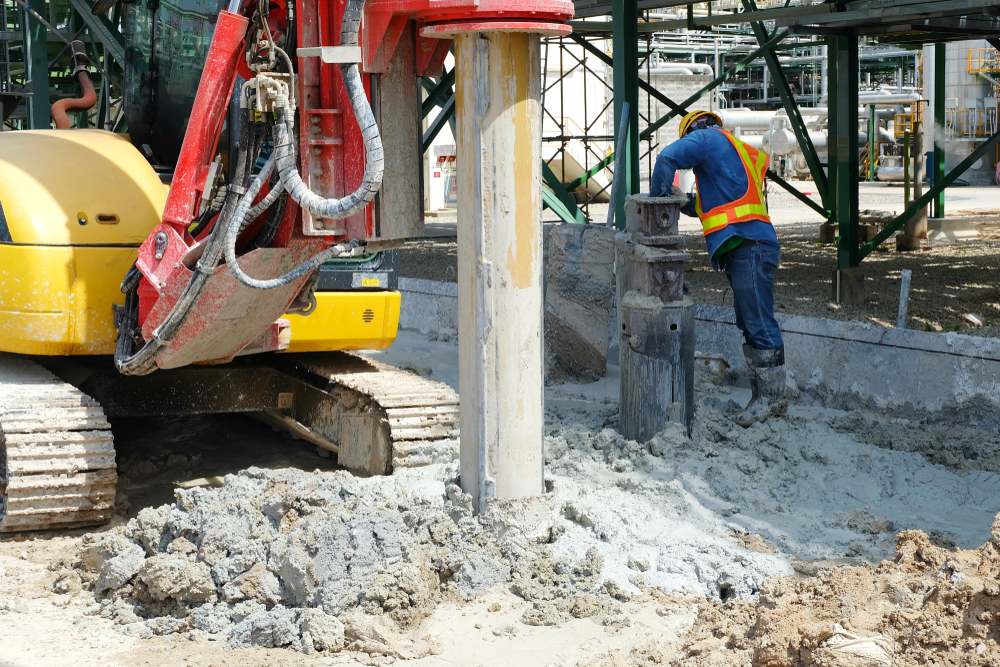Not known Details About Geotechnical Engineering For Construction Projects
Not known Details About Geotechnical Engineering For Construction Projects
Blog Article
The Ultimate Guide To Geotechnical Engineering For Construction Projects
Table of ContentsA Biased View of Geotechnical Engineering For Construction Projects10 Easy Facts About Geotechnical Engineering For Construction Projects ShownGeotechnical Engineering For Construction Projects Can Be Fun For AnyoneThe 7-Minute Rule for Geotechnical Engineering For Construction ProjectsUnknown Facts About Geotechnical Engineering For Construction ProjectsThe Basic Principles Of Geotechnical Engineering For Construction Projects
These functions should be analyzed by geotechnical engineers to anticipate their motions under different situations., making this analysis essential.A geotechnical designer will examine soil to determine the bearing capability of the earth and suggest appropriate foundation types, such as shallow structures, deep structures like heaps, or specialized options like floating structures for soft dirts. Understanding the features and actions of soil and rock, in enhancement to just how they connect with buildings that have been put up on or within them, is one of the main descriptions for why geotechnical engineering is necessary.
In addition to architectural preparation and building and construction, geotechnical design is likewise important to the reconstruction and upkeep of pre-existing frameworks. Age-related degradation or added troubles can impact a framework's stability and effectiveness. Ecological defense is achieved via geotechnical design. Knowledge in air, water, and dirt high quality upkeep is used by geotechnical designers to reduce the unfavorable impacts of jobs.
To sum up, geotechnical design is an important discipline that preserves the strength and stability of civil framework. Geotechnical engineers contribute to making building tasks effective all over the world by comprehending the behaviour of planet materials and using proper preparation methods.
The Ultimate Guide To Geotechnical Engineering For Construction Projects
The fundamental stability of any task is important. Geotechnical engineering plays a critical function in making sure that frameworks are improved solid ground, essentially and figuratively. By analyzing dirt, rock, and subsurface conditions, geotechnical engineers offer necessary understandings that assist in the layout, building, and upkeep of structures and framework.

Getting My Geotechnical Engineering For Construction Projects To Work
Lab testing: Identifying the residential or commercial properties of dirt and rock. Field testing: Carrying out tests on-site to evaluate problems. Evaluation and design: Utilizing data to design structures, maintaining wall surfaces, passages, and various other frameworks. Numerous top-level building and construction projects have effectively made use of geotechnical engineering to ensure their stability and security. For example:: The world's highest structure required a deep understanding of the underlying geology.

As a leader in geotechnical design, BECC Inc. is committed to providing cutting-edge and efficient services that fulfill the greatest standards of high quality and security., a mechanical engineer and rock hound.
Not known Details About Geotechnical Engineering For Construction Projects
Terzaghi likewise established the framework for concepts of birthing ability of foundations, and the theory for forecast of the price of settlement of clay layers due to debt consolidation. After that, Maurice Biot totally created the three-dimensional soil combination theory, prolonging the one-dimensional design formerly created by Terzaghi to much more general hypotheses and introducing the set of standard formulas of Poroelasticity.
Geotechnical engineers explore and establish the homes of subsurface problems and products.
8 Easy Facts About Geotechnical Engineering For Construction Projects Shown
, which uses a thick-walled split spoon sampler, is the most common way to accumulate disrupted samples.

Generally, the user interface's precise geometry is unknown, and a simplified user interface geometry is presumed. Finite inclines need three-dimensional versions to be assessed, so my sources most inclines are analyzed thinking that they are definitely broad and can be stood for by two-dimensional designs.
Geotechnical Engineering For Construction Projects for Dummies
The empirical method might be described as complies with: General exploration sufficient to establish the harsh nature, pattern, and buildings of deposits. Evaluation of one of the most potential conditions and the most undesirable imaginable discrepancies. Producing the layout based upon a functioning theory of behavior prepared for under one of the most probable conditions. Choice of quantities to be observed as building and construction proceeds and calculating their anticipated values based upon the functioning theory under one of the most negative problems.
Measurement of quantities and examination of real problems. Style alteration per real problems The empirical approach appropriates for building and my site construction that has actually currently begun when an unforeseen advancement takes place or when a failure or accident looms or has already occurred. It disagrees for jobs whose style can not be changed during construction.
Report this page